
Sealing a deck is important for protecting it against the elements. Find out the cost to seal a deck, whether you DIY or hire a pro to do the job.
More lounging, less laboring


Choosing the best maintenance-free decking is not about skipping deck care altogether. It is about getting a gorgeous deck that demands far less from you. From innovative manufactured boards to naturally tough woods, we’ve rounded up the top options that stand up to weather, fading, and time with minimal effort and maximum style.
Regular deck maintenance includes sweeping off debris, washing the deck with mild soap, and hosing it down or pressure washing it. Long-term maintenance includes repairing or replacing hardware or boards and always being on the lookout for damage, warping, or cracking/peeling paint.
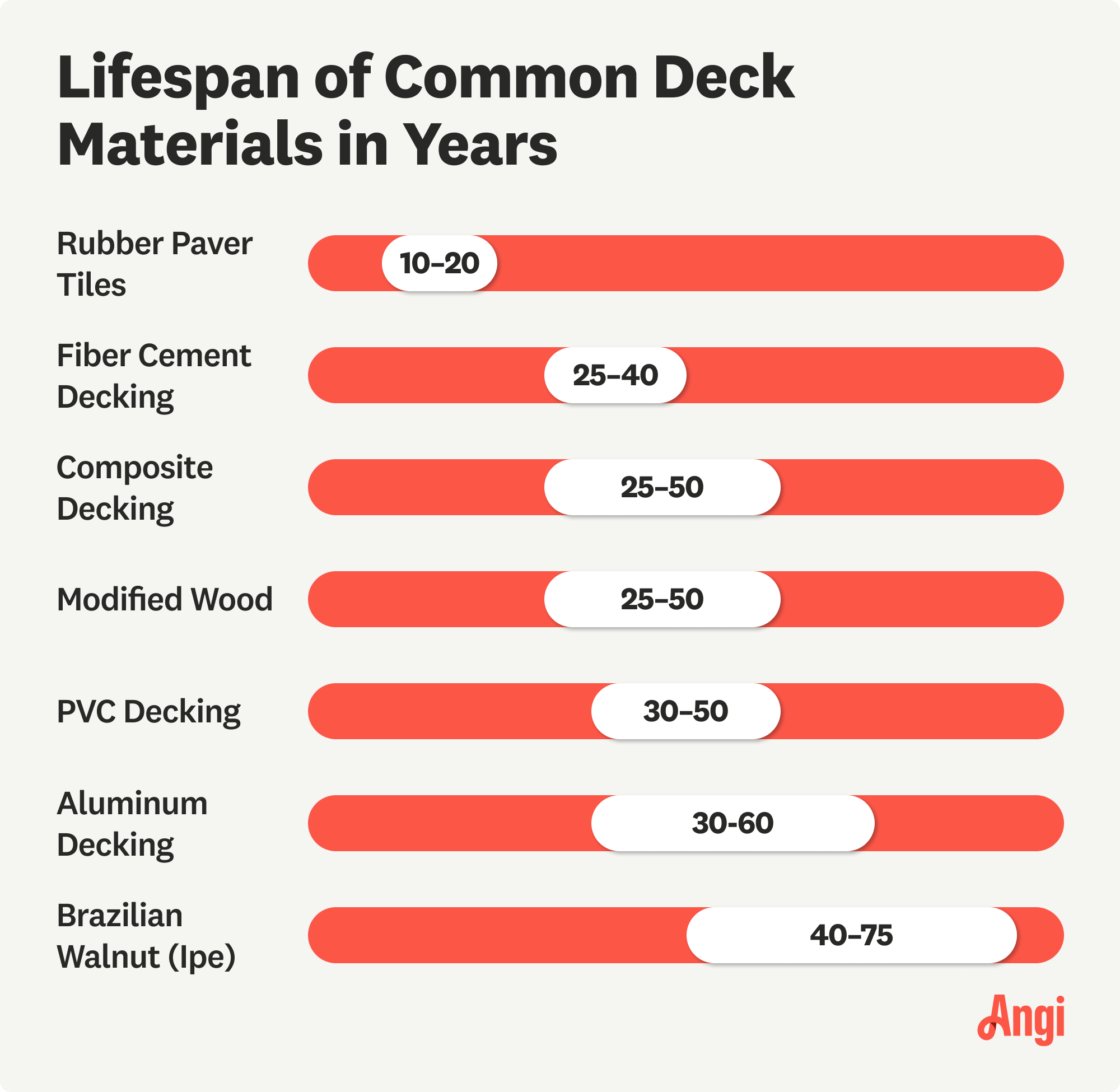
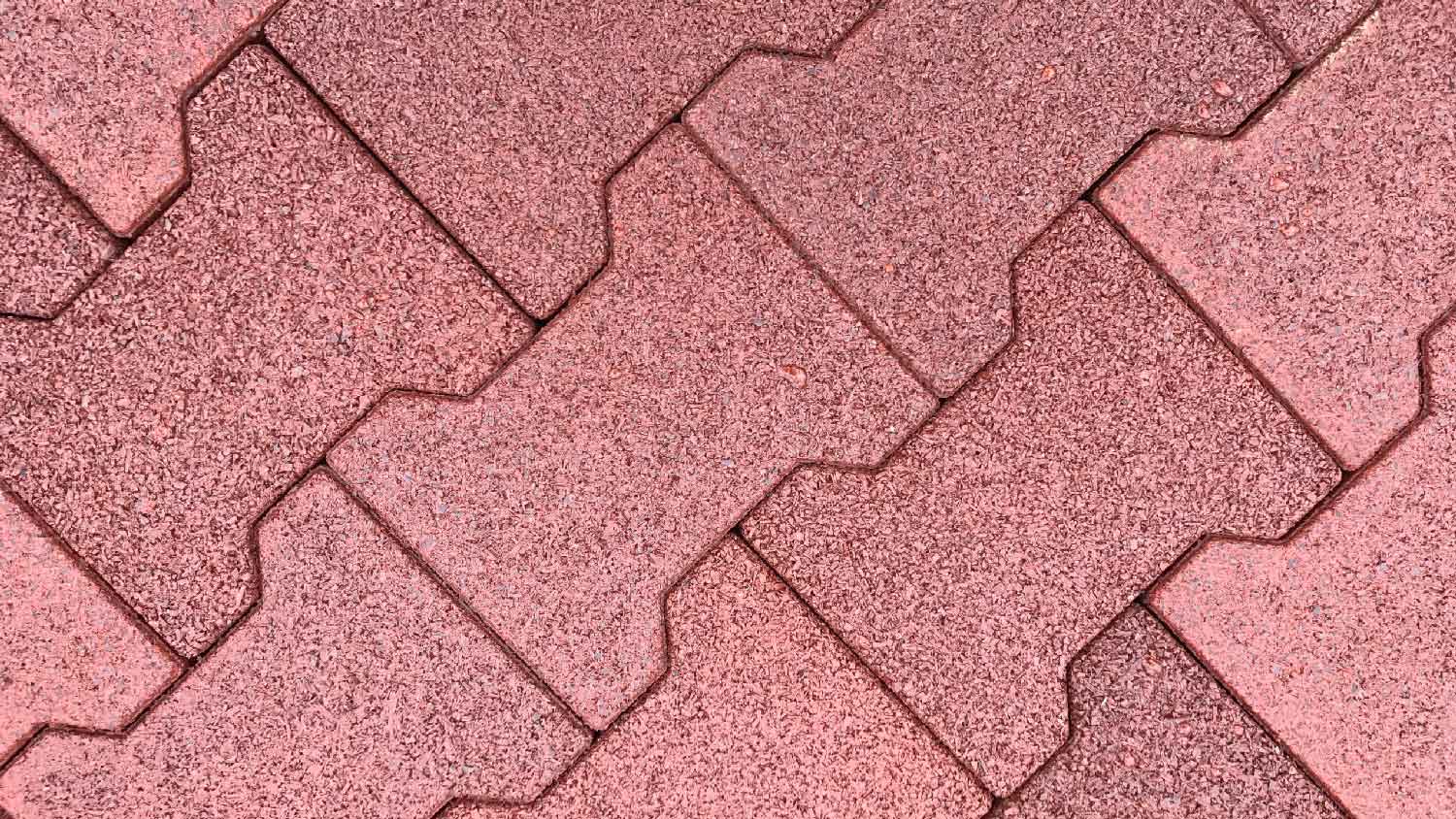
Rubber paver tiles are a durable, low-maintenance decking option that is weather-resistant. They are also easy to clean using an appropriate detergent and a garden hose, and they are typically more affordable than other materials.
Made from recycled rubber, these pavers resist cracking in harsh weather and consistently look good without sealing or staining. Plus, they’re soft underfoot, absorb shock, and are slip-resistant, making them an excellent choice for busy decks near pools.
Conversely, rubber pavers can fade over time with direct sun exposure and may become uncomfortably hot in warm weather. They also don’t offer the upscale look of other materials resembling wood. However, they are tough to beat if you value comfort, safety, and low maintenance.
| Pros | Cons |
|---|---|
| Budget-friendly | Can fade in sunlight |
| Slip-resistant | Less natural look |
| Soft underfoot | Get hot in the sun |
| Weather-resistant | Not as upscale |
Best for: Areas near water, like pools and spas.
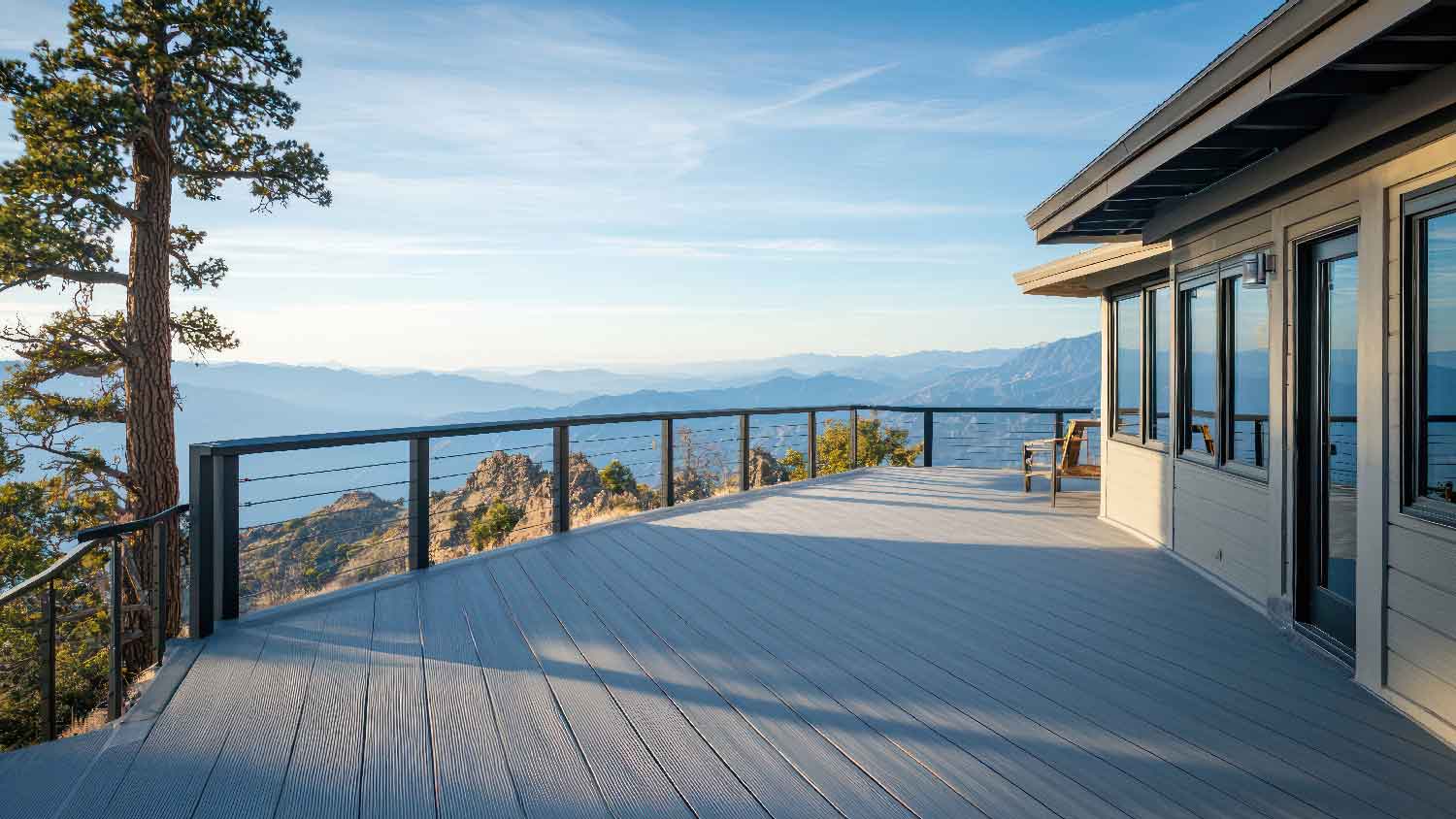
Fiber cement decking is a tough, low-maintenance option that looks like real wood without the hassle of annual sealing, which may also include sanding and staining. The material is a mix of cement, sand, and fibers, made to withstand rain, sun, bug infestations, and fire. Fiber cement is a solid bet if you want a deck that holds its color and won’t crack or rot after a few seasons.
Fiber cement is heavier than other materials, making installation trickier and sometimes pricier. But once it’s in, you’ll have a strong, great-looking deck that doesn’t ask for much, just a little cleaning now and then to keep it looking fresh.
Avoid harsh, abrasive cleaners, and don't pressure wash your fiber cement decking. Both can damage the decking’s membrane, causing discoloration and chipping.
| Pros | Cons |
|---|---|
| Real wood look | Heavy to install |
| Weather-resistant | Higher up-front cost |
| Won't crack or rot | Can chip if damaged |
| Holds color well | No pressure washing |
Best for: Homeowners who want a wood look without the upkeep.
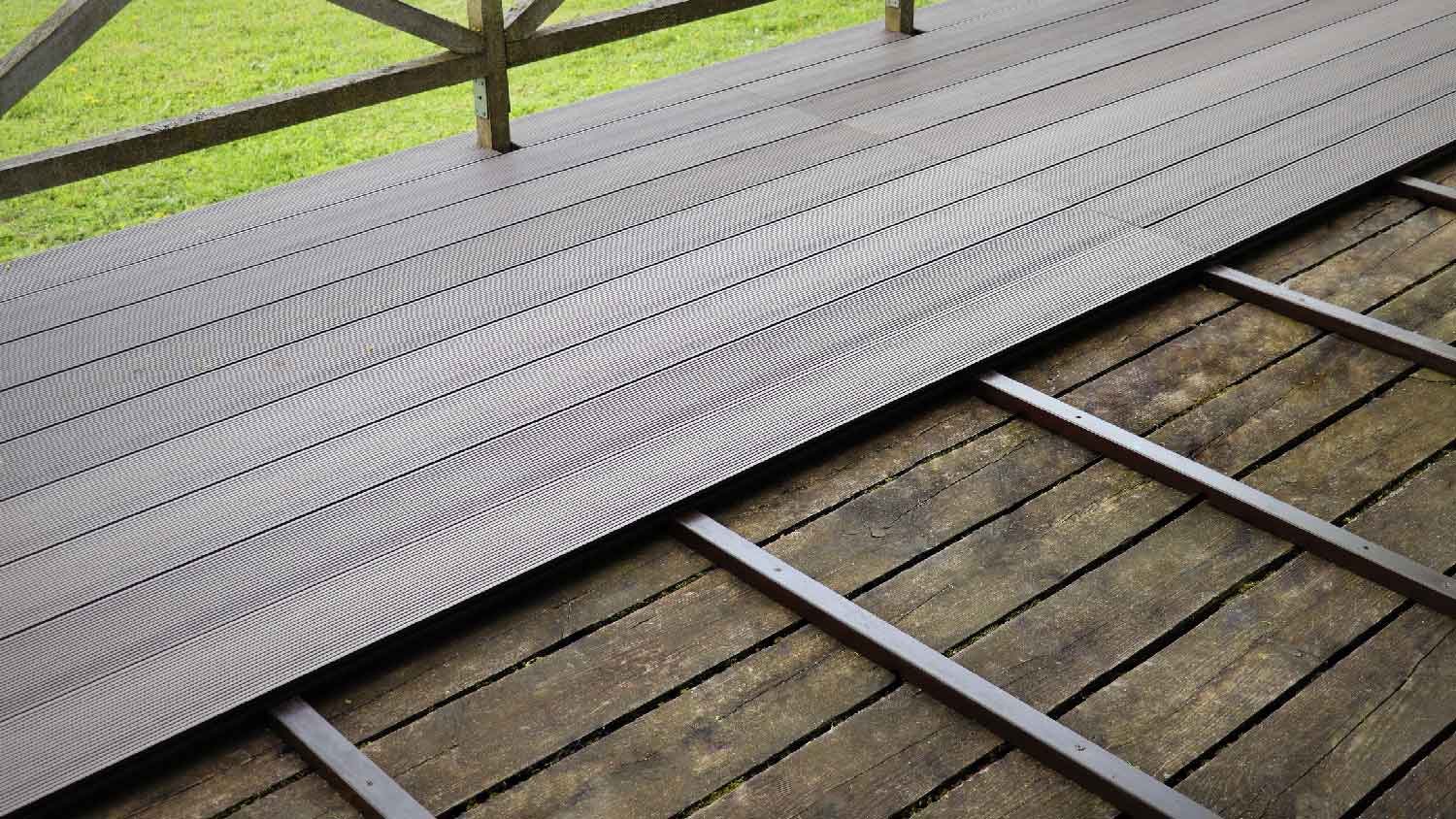
Composite decking gives you the natural look of wood without the endless upkeep. It consists of a blend of recycled plastics and wood fibers, making it tough enough to handle the weather, heavy foot traffic, and even scratching from energetic pets. The plastic binder also helps prevent warping, splintering, or rotting. Plus, plastic is not very appetizing for termites and other pests. Many homeowners turn to Trex decking, a popular composite brand that is considered maintenance-free.
That said, composite decking has a few kinks. It tends to heat up underfoot during hot summer days. While it resists bugs when intact, damaged boards can create spots where insects might move in. Composite can also stain easily, so clean up spills and debris quickly to keep your deck looking its best. Lastly, it can get slippery when wet, so look for slip-resistant options.
| Pros | Cons |
|---|---|
| Wood-like look | Heats up in summer |
| Weather-resistant | Can stain from spills |
| Resists pests | Damage can invite bugs |
| Won't warp or rot | Can get slippery |
Best for: High-traffic homes with pets.
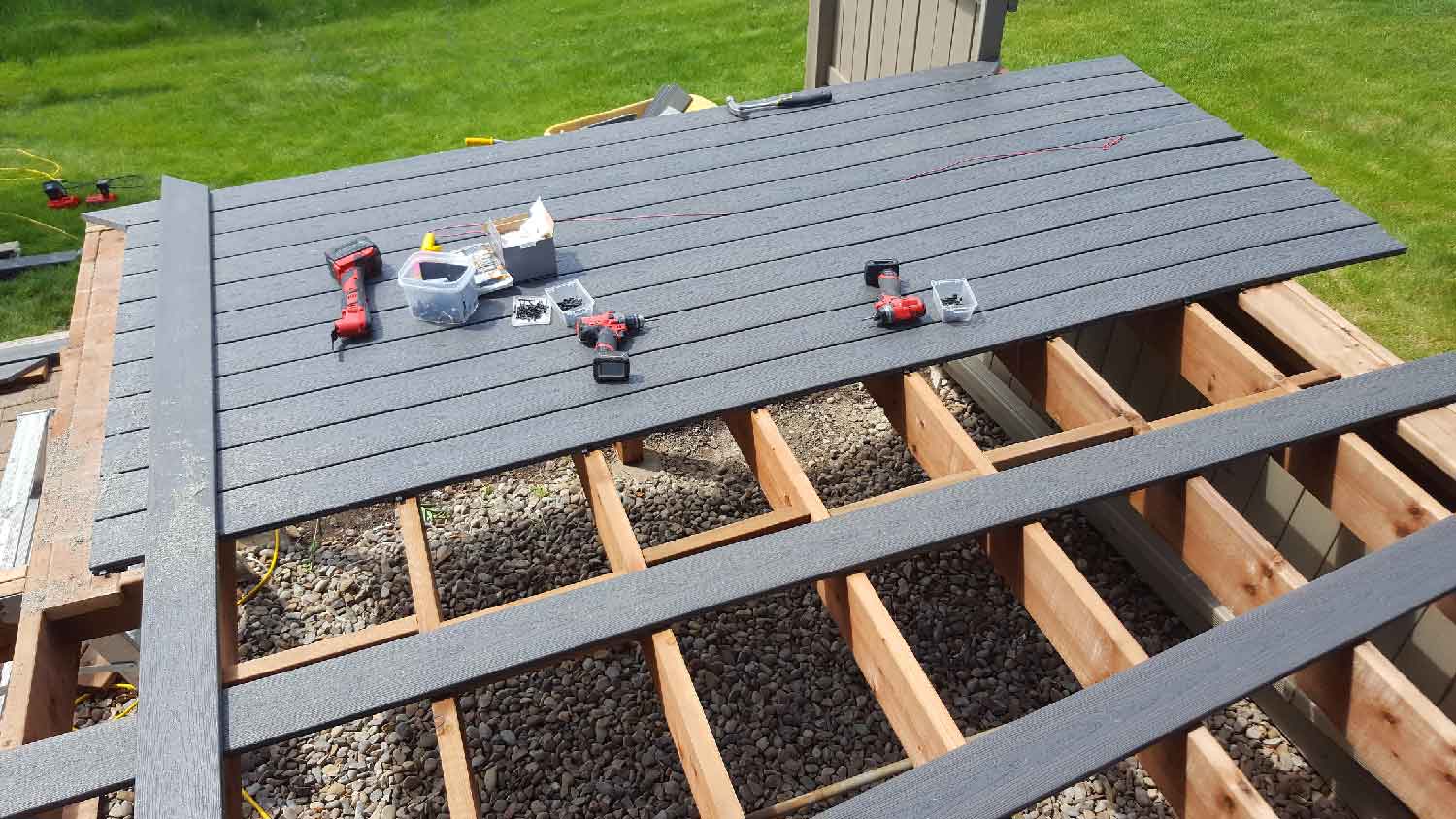
PVC decking is known for its incredibly low maintenance requirements. Made entirely from synthetic materials, PVC boards are highly resistant to moisture, mold, mildew, and insect damage. Even better, PVC decking tends to be lighter than wood or composite, making it easier to handle during installation. And no worries about cleaning; a quick rinse with a hose is usually all it takes.
There are a few things to keep in mind when using PVC decking. It can get hot in direct sun, so watch your bare feet during summer. While durable, it's prone to scratching and can warp under extreme weather conditions, and repairing the damage may require installing new boards.
When comparing PVC vs. composite decking, PVC offers durability and lower maintenance but doesn't match the natural look and feel of real wood like composite does. PVC is also non-biodegradable, so it is not an eco-friendly material.
| Pros | Cons |
|---|---|
| Moisture-resistant | Gets hot in direct sun |
| Resists mold and pests | Can scratch or warp |
| Lightweight | Repairs are tricky |
| Easy to clean | Not eco-friendly |
Best for: Homeowners who want an insect-proof deck.
.jpeg?impolicy=leadImage)
Modified wood decking is what it sounds like—real wood, offering natural beauty without the maintenance headaches. A chemical-free, heat-and-steam process makes it tougher, more stable, and less likely to warp, crack, or rot. It also outlasts traditional pressure-treated lumber, which is subject to heavy chemical treatments. Modified wood stands up to moisture, bugs, and temperature swings while maintaining its deep, uniform color with minimal upkeep.
Of course, there are a few trade-offs. While the material does not require regular sealing, it can be more brittle than regular wood boards and will fade to gray faster if you don’t apply a protective coating. It's also pricier than standard pressure-treated wood. But if you want an eco-friendly, low-maintenance deck built to last, modified wood is tough to beat.
| Pros | Cons |
|---|---|
| Real wood | Can fade |
| Resists rot and bugs | Leans toward brittle |
| Stable in any weather | Costs more |
| Eco-friendly | Needs some upkeep |
Best for: Homeowners who prefer the look and feel of natural wood and don’t mind a little maintenance.
If you want a deck made to last, aluminum is difficult to beat. It resists rot, pests, and weather without needing constant care—no staining, no sealing, just a rinse now and then. It is also eco-friendly since aluminum is recyclable and doesn't need chemical treatments. It's a strong choice with many colors and finish options, some that mimic the look of wood, plus built-in scratch and water resistance.
Of course, it's not perfect. Aluminum decking costs more up front than some other materials. Also, you may notice a hollow sound when walking on it, which can annoy some homeowners. Aluminum can expand and contract with the weather, and while it stays cooler than wood, it can still get hot under full sun.
| Pros | Cons |
|---|---|
| Resists rot and pests | Expensive |
| No sealing or staining | Noisy |
| Eco-friendly material | Expands in hot weather |
| Scratch- and water-resistant | Heats up in summer |
Best for: Abodes seeking a durable deck that lasts for generations.
.jpeg?impolicy=leadImage)
If you want a naturally resilient deck, Brazilian walnut, also known as Ipe, delivers big time. This hardwood is incredibly robust. It fights rot and bugs without chemical or steam treatments and shows off a rich brown color that screams luxury. Leave it alone, and it will weather into a silver-gray, or oil it annually to keep that deep, dramatic wood tone. It is also naturally fire-resistant, and best of all, it can last for several generations.
But Ipe is not a material for DIYers. Its dense, stubborn nature requires professional installation using the correct tools. It is pricey, too, and like all wood, it can still shift, cup, or buckle if not spaced properly. Additionally, you will need to oil it annually to preserve its rich brown tones. Simply put, composites might be an easier, less wallet-draining backup plan if you love the look of wood but not the hassle.
In November 2024, three genera in the Ipe family (Handroanthus, Roseodendron, and Tabebuia) were added to the CITES Appendices of species with a threat of endangerment. Trade of Ipe is now more strictly regulated with increased pricing.
| Pros | Cons |
|---|---|
| Natural and durable | Hard to install |
| Resists rot and pests | Expensive |
| Rich, luxurious look | May need oiling |
| Naturally fire-resistant | Can shift or buckle |
Best for: Homeowners looking to invest in high-quality natural wood decking that lasts for generations.
Homeowners can expect their decking building costs to range between $4,300 and $12,600. Materials and labor costs in your area significantly affect the final price. For example, rubber pavers cost $3 to $7 per square foot, while aluminum decking costs about $15 to $20 per square foot. Both are easier and less expensive to install than Ipe wood.
When searching for the perfect maintenance-free or low-maintenance decking material, it is best to work with a local deck builder. These experts can help you select the best material for your home, budget, and lifestyle.
From average costs to expert advice, get all the answers you need to get your job done.

Sealing a deck is important for protecting it against the elements. Find out the cost to seal a deck, whether you DIY or hire a pro to do the job.

Left with a sticky mess instead of a beautifully stained wood project? Learn why your wood stain isn’t drying and how to fix the problem.
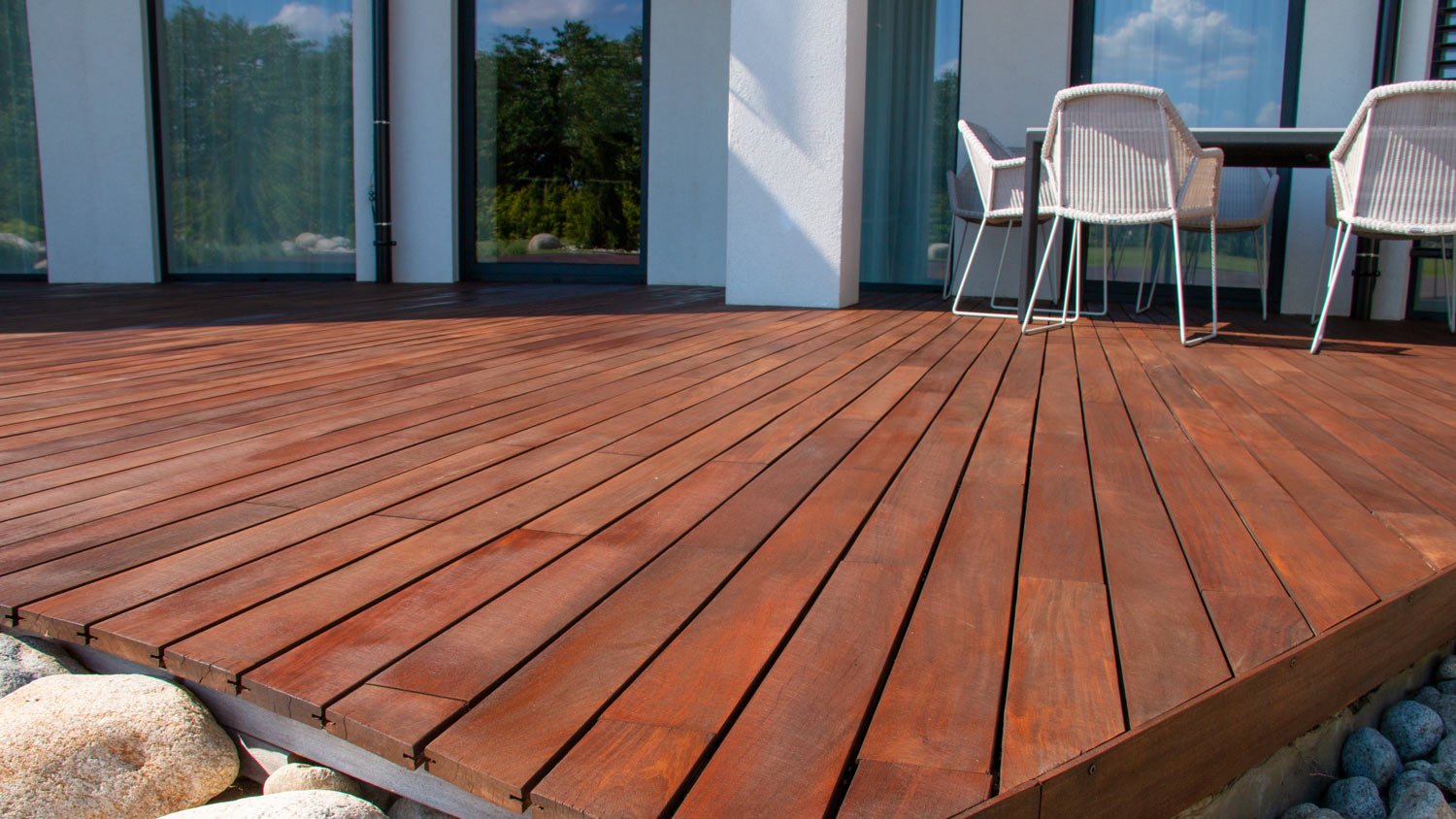
If you’re stuck wondering why your deck stain is peeling prematurely, use this guide to troubleshoot the problem and find a long-lasting solution.

You can get even more years out of your cedar fence by giving it a little stain and TLC. Learn how to seal a cedar fence with this guide.

Cleaning your deck at least once a year boosts its durability and appearance. Learn how to clean decking, whether it's wood or composite.

If your load-bearing porch post is starting to rot and deteriorate, you may wonder who to hire to replace porch columns. Let’s explore the project.